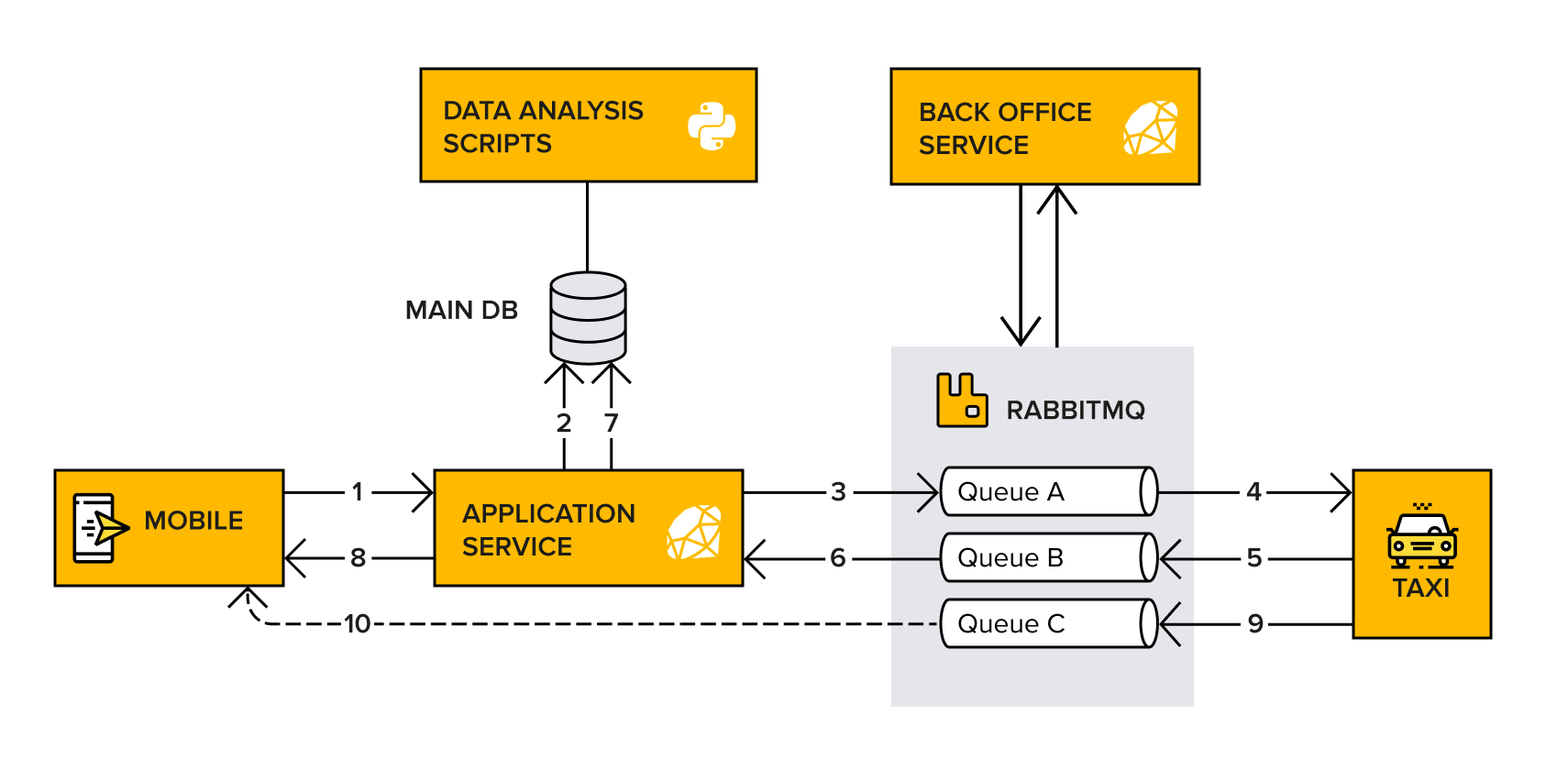Learn more about the ultimate RabbitMQ guide written by the experts at CloudAMQP!
Managing the largest fleet of RabbitMQ clusters in the world, CloudAMQP regularly shares tips, advice, and expertise through blog articles like this one. Sometimes we create video training for beginners and for experts or host live webinars on the finer points of RabbitMQ. Over the years, we have shared quite a lot of knowledge on message queues, so as an expert it was time for us to gather all of it in one comprehensive, organized way. Introducing the book RabbitMQ Essentials!
An excerpt from RabbitMQ Essentials, Chapter 1: A Rabbit Springs to Life Messages are typically small requests, replies, status updates, or even just information. On the surface, a message queue could seem kind of ordinary, but the reality is that they significantly simplify coding while having a major positive impact on scalability, reliability, and system performance. A successful message queue architecture is all about knowing how to organize, and that’s where RabbitMQ comes in.
Why did we write a book on RabbitMQ?
Blogging about RabbitMQ and creating video tutorials is great for sharing information on the latest FAQs and questions we hear from our customers and the community. The team decided to write a comprehensive guide to message queuing, one that users of any level would find useful and interesting. To drive home the factual, instructive points in the book, we would create a fictional company using RabbitMQ as its main platform to illustrate the flexibility and scalability that makes message queuing so powerful.
An excerpt from RabbitMQ Essentials, Chapter 4.Tweaking Message Delivery: The developers look at what is offered in terms of message expiration in RabbitMQ and list the following possible options that can be implemented:
- Standard AMQP message expiration property for published messages
- Custom RabbitMQ extension that allows users to define a message TTL per queue
- Custom RabbitMQ extension that allows users to define a TTL for the queue itself
Custom RabbitMQ extension that allows users to define a TTL for the queue itself The first option is interesting because it is a standard AMQP option; however, after reading more about how it is supported in RabbitMQ, it turns out that these messages are only discarded when the message reaches the head, or beginning, of a queue. Even if they have expired, the messages would still sit in the queue, which would defeat the purpose of what they're trying to achieve.
What is covered in the book?
Whether you are an experienced developer who regularly relies on enterprise messaging products or just someone who enjoys the challenge of developing open-source applications, RabbitMQ Essentials is written for you. Follow along as the case study company uses microservice architecture to provide exceptional customer service and an enhanced user experience.
Chapters found in RabbitMQ Essentials:
- Chapter 1. A Rabbit Springs to Life
- Chapter 2. Creating a Taxi Application
- Chapter 3. Send Messages to Multiple Taxi Drivers
- Chapter 4. Tweaking Message Delivery
- Chapter 5. Message Routing
- Chapter 6. Taking RabbitMQ to Production
- Chapter 7. Best Practices and Broker Monitoring
As the company grows and evolves, so does its app, illustrating how easy it is to upgrade and add features with a message queue architecture. RabbitMQ Essentials begins by explaining the basic concept of message queues, microservice architecture, and RabbitMQ. Next, the book gets into creating an application, sending messages, fine-turning the message flow, and taking RabbitMQ into production. Finally, the book shares best practices and monitoring strategies, making it the most referred to chapters.

Why should I read RabbitMQ Essentials?
We believe that message queues and RabbitMQ are fun and useful and everyone should be on board! That’s why RabbitMQ Essentials is full of information useful in real-life scenarios. We’ve made sure the book is easy to read and understand even for beginners, yet interesting and technical enough for experienced developers. Plus, the book is full of tips, tricks, and advice that can only be shared by the most experienced RabbitMQ support team in the world - CloudAMQP!
An excerpt from RabbitMQ Essentials, Chapter 7. Taking RabbitMQ to Production Creating clusters of nodes in different locations ensures that information is reachable even if the systems go down. By setting up alerts, the team has the ability to respond to failures almost instantaneously, a key feature of all production systems. To achieve nearly constant uptime, the topics in this chapter will include:
- Tackling the Single Point of Failure (SPOF)
- Federating brokers
- Monitoring the broker
Tell me about the author of the second edition...
Lovisa Johansson has been working daily with RabbitMQ for many years through CloudAMQP, the RabbitMQ segment of 84codes. With more than 50,000 running instances, they are considered to be the largest provider of RabbitMQ as a service in the world. Lovisa is an experienced developer with a Master's degree in Computer Science and Engineering. Through her work, she continues to write the most popular and widespread educational content about RabbitMQ and occasionally shares this knowledge as a speaker at various conferences.
How do I get RabbitMQ Essentials?
No matter your experience level with message queues, RabbitMQ Essentials will help you in your daily life by providing answers to some of the most common questions in a relatable, easy to digest way. You will refer to the helpful best practices and monitoring strategies section over and over again, which makes the book a must-have for busy professionals. Purchase your very own copy of RabbitMQ Essentials!






